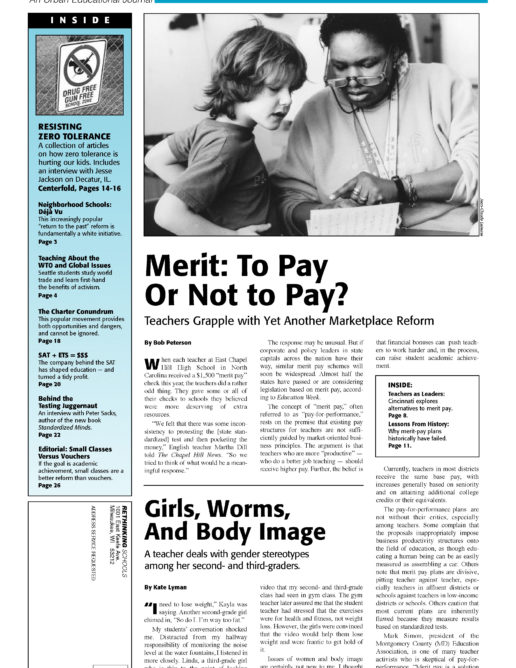Preview of Article:
For-Profit Firm On the Ropes
Tesseract can't even afford postage.
A company that for years was the leader in for-profit education is in the midst of a corporate and educational melt down.
Tesseract Group Inc., formerly known as Education Alternatives Inc. (EAI), is millions in debt, has laid off much of its staff, has fired and then re-hired its former CEO, has been kicked off the Nasdaq stock market, and is up for sale to anyone interested. And those are just some of its problems.
In the mid 1990s, EAI was the darling of the education privatization movement, and it won several high-profile contracts to run public schools in Baltimore and Hartford. It promised it could run the public schools for the same amount of money, improve achievement – and make a profit. It failed on all three counts.
After being kicked out of Baltimore and Hartford, CT, EAI changed its name to Tesseract and moved its headquarters to Arizona. Thereit took advantage of the state’s lax charter schools law and opened up 13 charter schools in the Phoenix area, along with private schools and private preschools.
Originally, the company focused on taking over public schools in low-income urban areas, arguing that the problems in inner-city schools rested in mismanagement, not lack of resources. In recent years, the company zeroed in on more lucrative markets.

